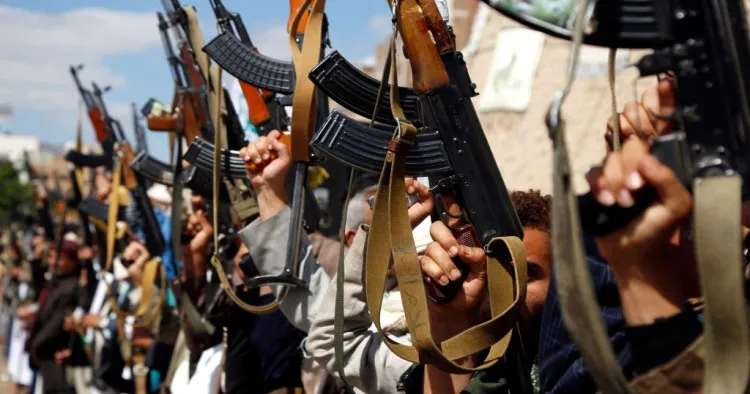Spillover of Non-International Armed Conflicts
Introduction
Modern armed conflicts are significantly different from the types of conflicts fought in the earlier part of the 20th century. The Geneva Conventions of 1949 were drafted to regulate armed conflicts between States with one sole provision in all four treaties dedicated to the regulation of civil wars. However, the world has witnessed an increasing number of non-international armed conflicts (NIACs) between States and non-state actors as well as between non-state actors themselves. Some of these NIACs tend to traverse the territorial boundaries of one particular State. These ‘spillover NIACs’ involve a State’s armed forces being engaged in a conflict with a non-State armed group (NSAG) in neighbouring States’ territories. This article will analyse how IHL continues to apply to such conflicts.
The Legal Regime
CA3
According to Common Article 3 (CA3) of the Geneva Conventions, a non-international armed conflict (NIAC) is an armed conflict that takes place on the territory of a High Contracting Party. While an international armed conflict (IAC) is an ‘armed conflict which may arise between two or more of the High Contracting Parties’ including cases of occupation (Article 2), a NIAC is any conflict that occurs between a State and a non-State armed group (NSAG) or between two or more NSAGs. CA3 imposes certain obligations upon parties to a NIAC, such as the humane treatment of people not participating in hostilities, the prohibition of certain acts (such as hostage-taking) and an obligation to care for the sick and wounded. However, it does not define a NIAC, a task which was instead taken up by international criminal tribunals.
APII
CA3 is supplemented by additional rules governing NIACs under Additional Protocol II of 1977 to the Geneva Conventions (APII). Article 1(1) of APII defines NIACs as armed conflicts taking place between a High Contracting Party’s ‘armed forces and dissident armed forces or other organised armed groups.’ This definition precludes conflicts between two or more NSAGs from falling under the purview of APII. Armed groups under APII must operate ‘under responsible command’ in a manner that they ‘exercise such control over a part of its territory as to enable them to carry out sustained and concerted military operations to implement [APII].’
Article 1(2) further clarifies the minimum level of intensity of the conflict to fall under the purview of APII. According to Article 1(2), the violence must exceed that of ‘situations of internal disturbances and tensions, such as riots, isolated and sporadic acts of violence and other acts of a similar nature’. The armed conflicts between these two groups must achieve at least a minimum level of intensity along with the parties involved showing a minimum level of organisation.
The territorial element is important to the application of IHL to NIACs. CA3 states that a NIAC must occur ‘on the territory of a High Contracting Party’ for it to apply. Similarly, under APII, the NSAG in question must exercise a degree of territorial control for the NSAG to be subject to APII obligations. The complexity of spillover NIACs is that they may originate within the territory of a single State, but may not necessarily remain confined within the territorial borders of that State. When these conflicts ‘spill over’ into a neighbouring state, many academics agree that the conflict between the state and the NSAG remains a NIAC whilst a parallel IAC also takes place between the state and the neighbouring spillover state. This is because even though the target remains the NSAG and not the neighbouring state itself, the infrastructure of the state may still be affected. The better view is for there to be a simultaneous NIAC and IAC occurring.
Territoriality and Spillover NIACs
The Application of CA3
The language of CA3 indicates that a conflict falls under its purview if it occurs ‘in the territory of one of the High Contracting Parties’. This indicates that as long as a conflict occurs in the territory of a State that has ratified the Geneva Conventions, the parties to the conflict must observe the minimum protections provided under CA3. This language arguably does not restrict the conflict to the territory of a State that is involved in the conflict, but also the territory of neighbouring States as well. This means that territoriality does not affect the application of CA3 to transnational NIACs.
In the case of The Prosecutor vs. Dusko Tadic, the International Criminal Tribunal for the former Yugoslavia (ICTY) expounded upon the threshold and application of CA3. The ICTY defined a NIAC as ‘an armed conflict exists whenever there is a resort to armed force between States or protracted armed violence between governmental authorities and organized armed groups or between such groups within a State’ (Decision on the Defence Motion for Interlocutory Appeal on Jurisdiction, para 70). The notion of an ‘organised’ armed group was clarified in the Appeal Judgement as one that ‘normally has a structure, a chain of command and a set of rules as well as the outward symbols of authority’ (Appeal Judgement, para 120). There is no requirement of any territorial control for an organised armed group to be established. It is also assumed that if one of the parties to a NIAC is a State, it will already possess control over territory, which makes it responsible for enforcing IHL in said territory.
The second criteria of ‘protracted armed violence’ refers to the temporal and geographical scope of violence characterising a particular armed conflict. The ICTY clarifies that up until ‘a peaceful settlement is achieved,’ IHL continues to apply ‘to the whole territory under the control of a party, whether or not actual combat takes place there’ in cases of internal conflicts (Interlocutory para 70). The latter phrase, however, does not make territorial control a necessary precondition to the establishment of a NIAC in the first place. In terms of the geographic scope of a NIAC, the ICTY held that ‘the rules contained in Article 3 also apply outside the narrow geographical context of the actual theatre of combat operations’ (Interlocutory Appeal, para 69). This reinforces the notion that geographical or territorial control is not a necessary precondition for a NIAC to exist under the CA3 framework. Rather, the determinant factor is the ‘protracted’ nature of violence which distinguishes a NIAC from a mere internal disturbance which would fall under the sovereign prerogative of the territorial State.
Interestingly, in Boskoski and Tarculovski, the ICTY, quoting the ICRC’s Commentary, stated that CA3 was meant to apply ‘within the confines of a single country’ (para 183). It also acknowledged that CA3 was meant to apply to ‘conflicts which are in many respects similar to an international war’ (para 185). However, the Boskoski interpretation also assumes that an NSAG may only operate within the territory in one State, whereas the language in Tadic can apply to NSAGs that operate in the territory of multiple States. This is significant because it indicates that the application of CA3 is not necessarily bound territorially, and can cover conflicts that spill over into other States’ territories. Likewise, if State A continues to fight an NSAG when the conflict has spilled over into State B, State A is still bound by CA3 when engaging in hostilities with the NSAG in State B. The same equation applies to a conflict between two NSAGs.
The Application of APII
In contrast to CA3, APII has more stringent criteria for what constitutes a NIAC. This has direct implications on whether the APII regime, which places more obligations on parties to a conflict and guarantees more protections, can apply to spillover NIACs.
As noted earlier, APII particularly applies only to armed conflicts occurring where at least one party is a State. The other party or parties can be dissident armed groups or organised armed groups that meet the minimum criteria of organisation and territorial control to carry out ‘sustained and concerted military operations’ (Article 1(1)). As highlighted in Boskovski, the degree of organisation required to engage in ‘protracted armed violence’ is lower than the degree of organisation required to carry out ‘sustained and concerted military operations’ (para 197). Additionally, the ICTY clarified that the intensity of violence was a key factor in determining the presence of a NIAC (para 177). The intention behind such specification is to ensure that APII’s scope and application are limited and do not extend to the types of incidents defined in Article 1(2).
However, this makes application of APII difficult where conflicts spill over into other territories where the NSAG does not have the requisite territorial control. In order for APII to apply in a conflict that has spilled over into State B, the same conditions must be fulfilled in State B as they did in State A. This means that the higher thresholds for the intensity of violence and the organisation of the armed group must be fulfilled. APII specifies a degree of territorial control as a necessary precondition for the ‘organisation’ criteria which allows it to conduct ‘sustained and concerted military operations’. If the NIAC crosses into State B’s territory where the NSAG does not have the necessary territorial control, the conflict occurring in State B does not fall under the purview of APII. Similarly, if the NSAG uses a lower threshold of violence in the territory of State B, the NIAC criteria is unfulfilled as well.
Conclusion
Spillover NIACs pose a challenge to established NIAC law. Nevertheless, an interpretation of both CA3 and APII indicates that the criteria established under CA3 is more suitable to govern spillover NIACs as opposed to APII. CA3 has a lower threshold of organisation that is not dependent upon territorial control, but rather upon the internal command structure of the organisation, whereas APII’s requirement of territorial control to conduct sustained and concerted military operations may not hold true for an NSAG’s operations across territories in which a conflict spills over. Thus, CA3 provides a more appropriate framework than APII for governing spillover NIACs.
The opinions expressed in the articles on the Diplomacy, Law & Policy (DLP) Forum are those of the authors. They do not purport to reflect the opinions or views of the DLP Forum, its editorial team, or its affiliated organizations. Moreover, the articles are based upon information the authors consider reliable, but neither the DLP Forum nor its affiliates warrant its completeness or accuracy, and it should not be relied upon as such.
The DLP Forum hereby disclaims any and all liability to any party for any direct, indirect, implied, punitive, special, incidental or other consequential damages arising directly or indirectly from any use of its content, which is provided as is, and without warranties.
The articles may contain links to other websites or content belonging to or originating from third parties or links to websites and features in banners or other advertising. Such external links are not investigated, monitored, or checked for accuracy, adequacy, validity, reliability, availability or completeness by us and we do not warrant, endorse, guarantee, or assume responsibility for the accuracy or reliability of this information.

Raas Nabeel
Raas Nabeel is a Research Associate at the Research Society of International Law. He completed his BA-LLB (Honours) from LUMS, graduating with High Distinction in 2021, and completed his LLM from the University of Cambridge (Downing College) in 2022. He has been a Conference Assistant at the 2022 Cambridge International Law Journal Conference, as well as having been a part of the LUMS Law Journal Editorial Committee. His areas of interests include global governance, international humanitarian law and the law of armed conflict, international human rights law, environmental law, and intellectual property law.

